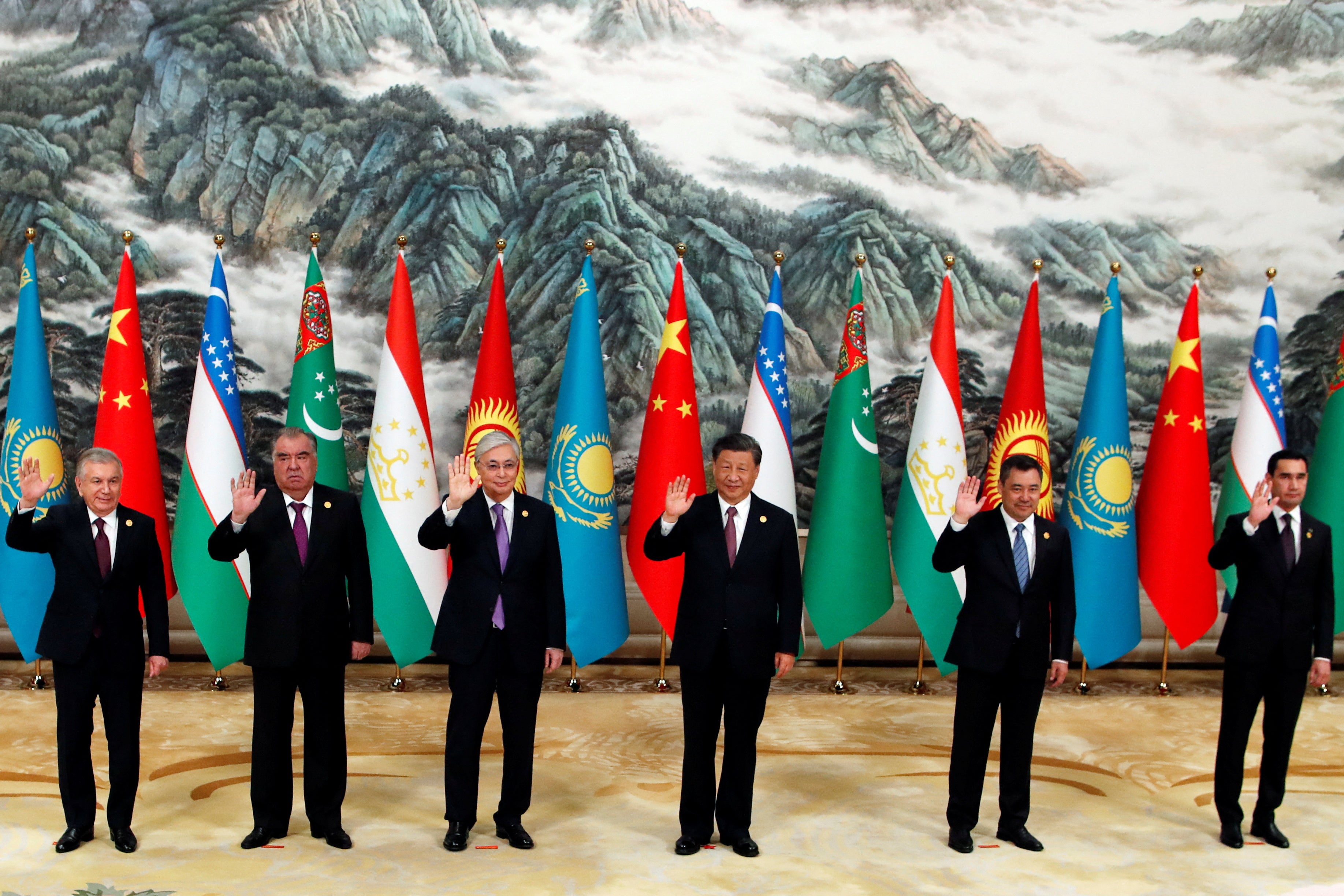
Russian forces dig in at Ukrainian nuclear plant, witnesses say
FILE PHOTO: Russian service members guard the entrance to the Zaporizhzhia Nuclear Power Plant during a visit of the International Atomic Energy Agency (IAEA) expert mission in the course of Russia-Ukraine conflict outside Enerhodar in the Zaporizhzhia region, Russian-controlled Ukraine, March 29, 2023. REUTERS/Alexander Ermochenko
LONDON (Reuters) -Russian military forces have been enhancing defensive positions in and around the Zaporizhzhia nuclear power plant in southern Ukraine in recent weeks, four witnesses said, ahead of an expected counteroffensive in the region.
New trenches have been dug around the city and more mines have been laid. Surveillance cameras at the plant are pointing north across a wide reservoir towards Ukrainian-controlled territory.
The Russians have had firing positions set up atop some of the plant's buildings for several months. Nets have been erected in a possible deterrent to drones.
The measures described by two Ukrainians who work at the power plant and two other residents in the city of Enerhodar underline the risks the war poses to the security of the facility.
The sources spoke on condition of anonymity because of fears for their safety in a city under Russian occupation.
Russian state nuclear energy company Rosatom said any possible military action by Ukraine posed a threat to nuclear safety, and that the plant's equipment was being maintained properly. The Ukrainian military intelligence agency and the Russian defence ministry did not respond to requests for comment.
Some nuclear industry experts said they were alarmed and warned that any damage to the plant could have dire consequences for people, the surrounding area, the war and the global nuclear industry.
"Nuclear reactors were not designed for war zones and I do not believe they can be safe or secure in a war zone," said Nickolas Roth, director at think tank the Nuclear Threat Initiative.
Petro Kotin, chief of Ukraine's Energoatom nuclear agency, told Reuters he did not believe Ukrainian forces would stage an attack directly on the site and could instead try to force the Russians to retreat by cutting off supply lines.
But there is concern in the international community that the six-reactor nuclear plant, Europe's largest, could be caught up in fighting, particularly as military analysts expect Ukraine to try to push Russian forces back in the Zaporizhzhia region.
The U.N. nuclear watchdog says that the military presence and activity is growing in the region, underlining the need for urgent action. It has warned for months of the danger of a major accident at the plant.
The agency plans to present a deal between Russia and Ukraine to the U.N. Security Council later this month to protect the facility, four diplomats told Reuters.
In Japan, where just over a decade ago an earthquake and tsunami cut power supply to the Fukushima nuclear power plant causing reactors to melt down, the government said it was keeping close tabs on Zaporizhzhia.
"We think it is an alarming situation and we are closely watching," said Satoru Yasuraoka, a director of the nuclear energy policy division at Japan's Ministry of Economy, Trade and Industry.
In April, Japan contributed 2 million euros to the U.N.'s watchdog to help its efforts to secure the safety of the Zaporizhzhia power plant.
Kotin said the biggest threat to safety at the plant was that fighting could cut the last remaining external power line needed to cool the plant's reactors. When that goes down, only backup diesel generators stand in the way of a meltdown.
"If all the pumps stop, you will have from one hour and a half hours to three days and you will have this meltdown," Kotin said.
The backup generators have already kicked in six times for short periods when the power has gone done due to shelling, which Russia and Ukraine have blamed on each other.
DIGGING IN OR EVACUATION?
Kotin estimated that Russian troop numbers at the plant had increased from around 500 to 1,500 in recent months. He is not able to access the facility, which is no longer operating, but has a network of contacts still there.
The four sources said they heard occasional blasts, which they assumed were from stray animals stepping on mines. One of the workers saw tracer bullets fired across the night sky from the roof of one of the plant's buildings, probably at a drone.
While the troop buildup and extra defences point to occupying forces digging in, there are also signs that the Russians have one eye on the exit.
The plant lies on the southern banks of the Kakhovka reservoir, which serves as a natural barrier to Ukrainian-controlled land to the north.
The plant and city of Enerhodar are connected by a single main road to Melitopol, the biggest Russian-occupied city in the southeastern Zaporizhzhia region, which provides Russia with a land corridor to the occupied Crimean peninsula.
Kotin said Russian forces would have to retreat if it looked like that road was going to be cut off.
He added that he believed Russian forces had already been conducting drills at the plant to practise pulling out.
"In my opinion, they are preparing for evacuation, so they are bringing everything in one place to be ready to take everything and to get out of there," he said.
Two of the sources in Enerhodar said they saw Russian forces this month taking X-ray, laboratory and other equipment away in boxes from a hospital as well as equipment from closed Ukrainian banks in the city of Enerhodar.
Ukraine has announced plans to conduct a big push to recapture occupied land soon, and it is widely expected to strike in the south because of its strategic importance as a bridge to Crimea and the Black Sea.
Russia has laid fortifications stretching from western Russia to Crimea and the trenchwork is particularly extensive on the way from Ukrainian-held land south to Melitopol, suggesting Moscow expects an attack there.
Moscow claims the nuclear plant, which provided a fifth of Ukraine's electricity needs before the war, now belongs to Russia after Kremlin leader Vladimir Putin declared partially-occupied Zaporizhzhia as Russian land along with three other Ukrainian regions last September.
Russian-installed officials have announced an evacuation from frontline areas in the Zaporizhzhia region, including Enerhodar. They say they have already evacuated more than 1,500 people from there.
The plant's reactors were all shut down by last September and the number of workers has fallen from around 11,000 Ukrainian staff before the war to around 6,000, Energoatom says.
Around 2,700 have signed contracts with a Russian subsidiary of Rosatom which Moscow now says operates the plant. Energoatom said last week that Russia was planning to evacuate more than 3,000 workers from the facility.
(Reporting by Tom Balmforth; additional reporting by Yuka Obayashi; editing by Mike Collett-White and Angus MacSwan)









